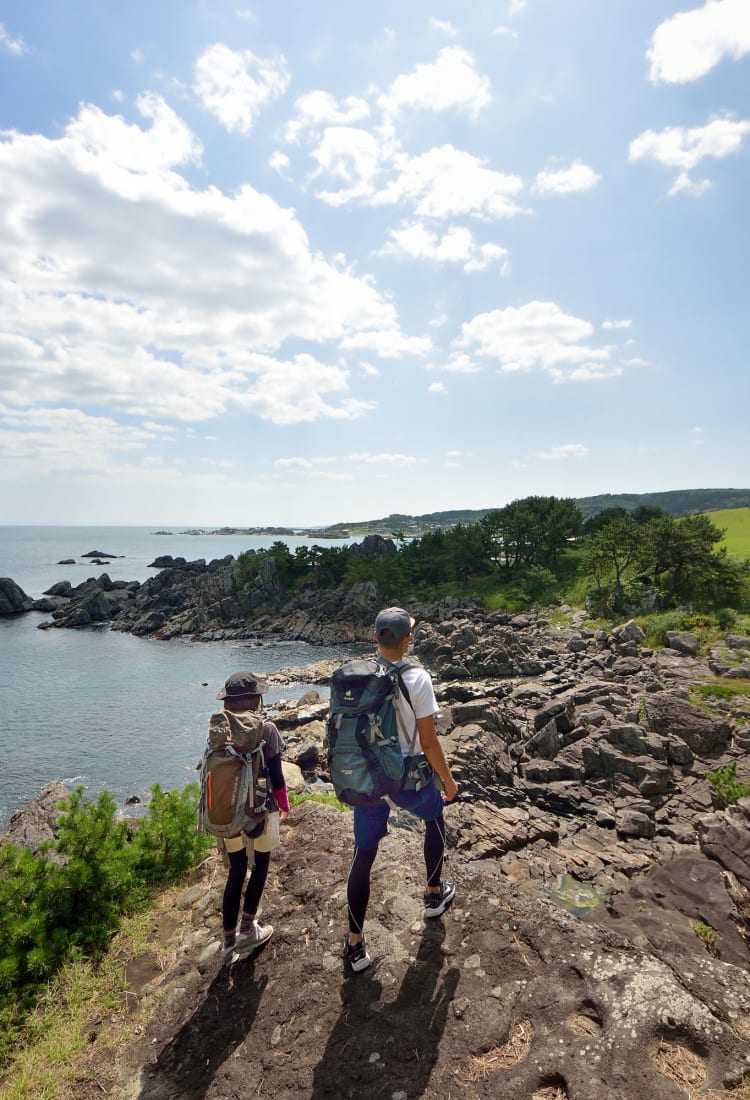
2024.08 Exploring Japan's Scenic Trails: Nature Walks and Local Encounters Introduction of Michinoku Coastal Trail in Sanriku Fukko (reconstruction) National Park and Aizu Trail recommended trail route in UNESCO Eco Park.
Get to know the Michinoku Coastal Trail – One Day Hike Via Hachinohe's Scenic Wonders
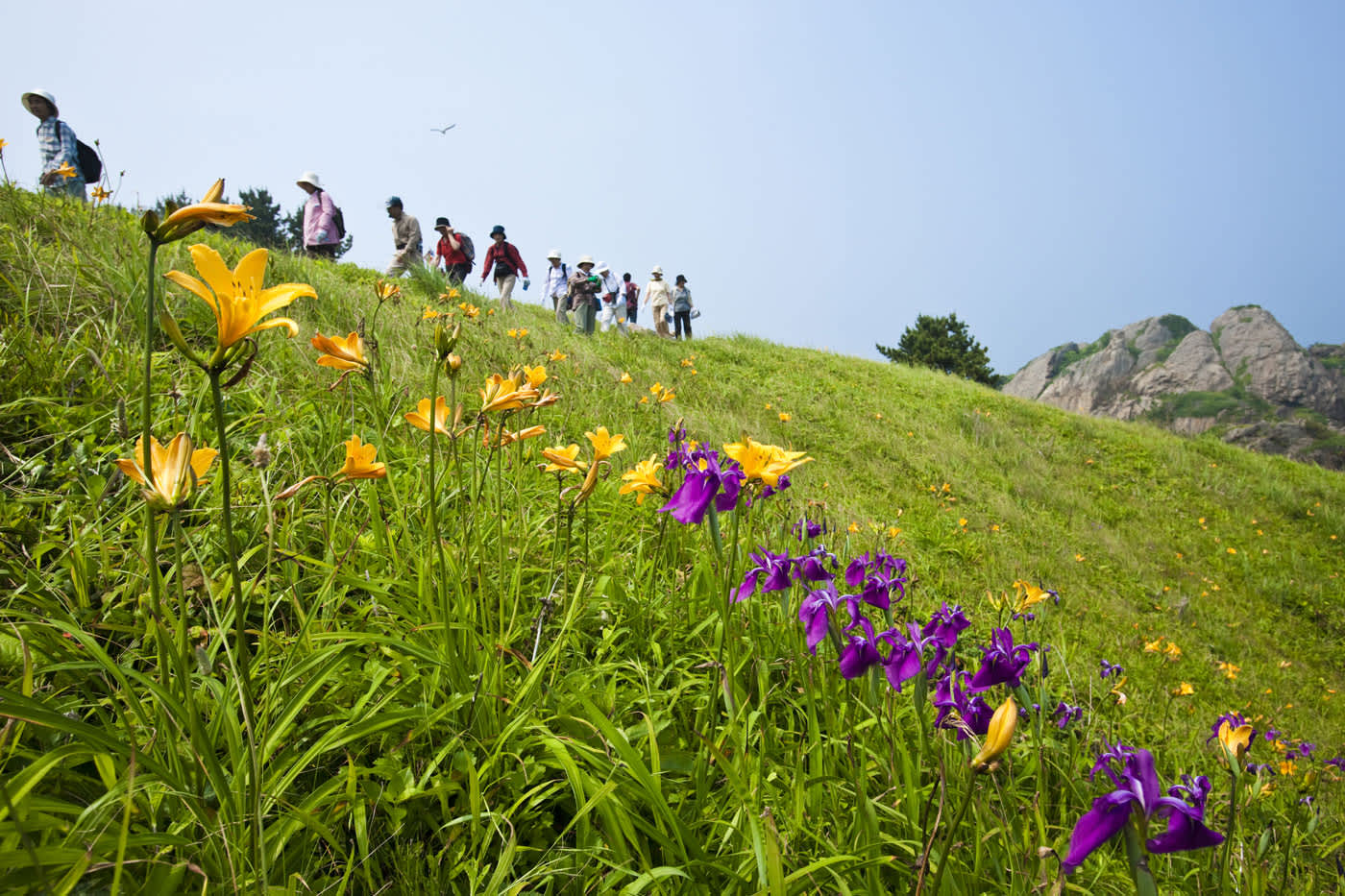
Walking the Michinoku Coastal Trail by the stunning seaside.
The Michinoku Coastal Trail is over 1,000 kilometers long and has various routes available for hikers who don’t have time to complete the entire walk. For a taste of the Michinoku Coastal Trail, visitors can enjoy an 11-kilometer hike from JR Same Station in Hachinohe City, Aomori Prefecture that takes in the stunning Tanesashi Coast, home to natural attractions such as the long white sand beaches of Sanriku Fukko National Park, towering pine trees, beautiful lawns, and wildflower fields.
This route in Hachinohe takes around four hours to complete in total, but allowing a whole day for the walk is recommended for a richer experience. In addition to stopping to admire the scenery, part of the joy of walking the trail comes from the unexpected encounters that you have with the people you meet along the way, whether it’s fellow walkers or friendly locals.
The walk begins in the small fishing town of Same in Aomori Prefecture, which can be accessed by taking the JR Hachinohe Line to Same Station. After leaving the station, visitors are greeted by a striking shark statue where a stop to take an amusing photo inside the shark’s jaws is expected! ‘Same’ is also the Japanese word for shark so the statue serves as a kind of playful landmark that creates a memorable experience for visitors.

Visit Kabushima Shrine, a nesting spot for black-tailed gulls.
The Michinoku Coastal Trail officially begins near Kabushima Shrine, around a 15-minute walk from the station and a famous nesting location for black-tailed gulls known as “umineko” in Japanese. Due to their monogamous nature, the shrine has become a popular destination for those seeking blessings for relationships and matchmaking.
After visiting the shrine, the sign for the Michinoku Coastal Trail a few meters away marks the beginning of the walking route alongside the Pacific Ocean, passing the Samekado Lighthouse, an attractive chalk-white lighthouse built in 1938 that has been designated one of the “Top 50 Lighthouses in Japan.”
The Ashigezaki Observatory is a stone viewing point located in front of the lighthouse, offering 360-degree panoramic vistas of the Tanesashi Coast. A short distance from here, the path continues through Nakasuka, also known as “Hana no Nagisa” (Shore of Flowers). Nakasuka is a beautiful flower garden home to more than 600 varieties of coastal and alpine plants.
From the flower garden, the trail leads to Osuka Beach, a white sandy beach stretching for just over 2 kilometers. The relaxing sound of crashing waves is not the only thing to be heard walking along the beach, as Osuka Beach is famous for its “singing sand” that squeaks underneath your feet as you walk on it.
After walking along the beach, the sand makes way for a grove filled with pine trees before opening up to a grassy area known as the Tanesashi Natural Lawn, one of the scenic highlights of the Hachinohe area.
The Tanesashi Natural Lawn is the ideal place for a rest stop with the Tanesashi Coast Information Center on hand to provide visitors with any information they need. Hikers can also stamp their Michinoku hiking passports here.
A little further on from the lawn area, the trail passes another lookout spot called Takaiwa Viewpoint, which is the highest viewing point on Tanesashi Coast. Stop for a while to soak up the natural surroundings before finishing up the walk at Okuki Station for onward travel.
A Two-Day Journey: Discovering the Charm of Tashirojima and Ajishima
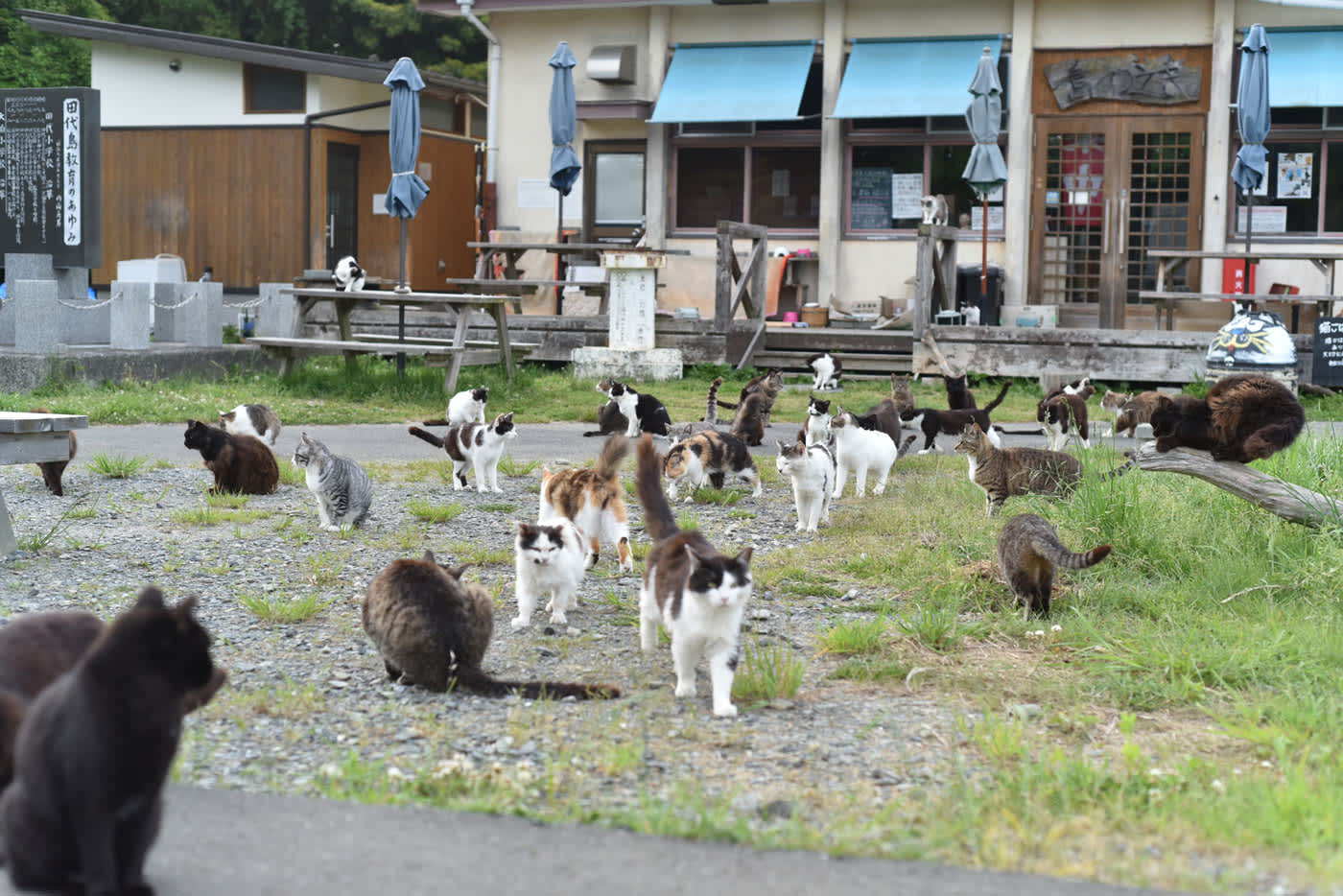
Tashirojima’s furry felines await visitors to the island.
For visitors who want to spend a little longer on the Michinoku Trail, this two-day overnight route takes in the islands of Tashirojima, known for its high population of cats, and neighboring Ajishima in Miyagi Prefecture, known for the white-sand Shirahama Beach and its clear waters.
The first day of this route begins with a trip to Tashirojima, which is best accessed by taking the train to Ishinomaki Station from Sendai, a major Japanese city with connections to the Shinkansen bullet train. Upon arrival at Ishinomaki Station, visitors can access Tashirojima by taking a ferry to the island (around one hour's journey time) from Ishinomaki Port.
Upon arriving at Tashirojima, you’ll likely find yourself greeted by some of the resident cats. Tashirojima used to be a hub for silkworm production, and it is believed that the cats were originally imported to help protect the cocoons from rats.
The island’s residents care for the cats by feeding them regularly so visitors are asked to refrain from feeding them to avoid any sickness due to changes in diet. Over time the cat population has multiplied, and it is said that the number of cat residents now outnumbers the human inhabitants. Since dogs are not generally allowed on the island, Tashirojima has maintained its unique status as a "cat island".
The journey on Tashirojima begins with a walk through the forest, leading to the cat shrine, which was originally built to honor a cat tragically killed by a falling rock. The cat is revered on the island as a guardian deity of good fishing. Don't be surprised if some of the shrine's visitors are cats themselves!

Feline friends and visitors gather at Tashirojima's cat shrine.
Continue your visit to the island by following the trail path and enjoying the peaceful atmosphere, natural beauty, and ocean views before hopping on the ferry to nearby Ajishima, less than 15 minutes away. Stay overnight on Ajishima before continuing your journey the next day.
Start your walk the next morning from Shirahama Beach, which is known for its clear waters and white sand. Continue from there with a five-kilometer walk through a forested area where the towering trees meet to form a kind of tunnel overhead.
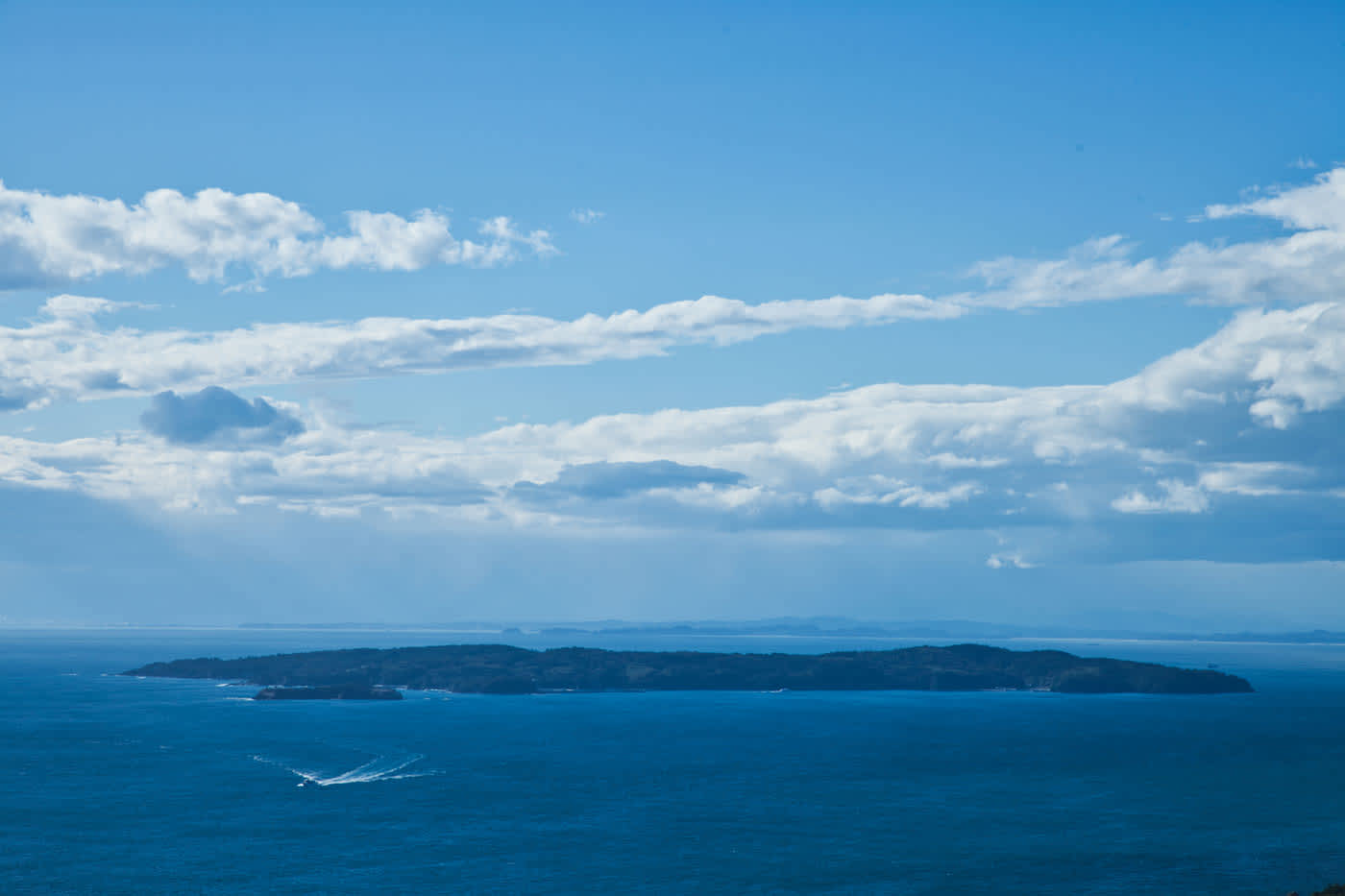
Ajishima – a tranquil escape featuring pristine beaches and scenic forest trails.
Further along the trail, visitors are treated to particularly scenic spots with views of the Oshika Peninsula and Mt. Kinka, and the small village of Nagato near the harbor with its friendly locals.
Boats depart from Ajishima’s Futawatashi Port in the south of the island to Ayukawa Port, where it’s possible to catch a bus back to Ishinomaki.
Aizu Adventures – Scenic Walks in the Japanese Countryside

Crossing the famous No. 1 Tadami River Bridge amidst autumn foliage.
The Aizu region, located in the western part of Fukushima Prefecture, is rich in tradition and deeply rooted in samurai culture. The city of Aizu-Wakamatsu, easily accessible from Tokyo, serves as a gateway to the region and for accessing the Aizu Trail.
Tadami Town is part of the Aizu Trail Tadami Yanaizu area, which has been a registered UNESCO Eco Park (Tadami Biosphere Reserve) since 2014. The region is home to vast areas of forests, mountains, rivers, and Tadami Lake – a large manmade lake formed by the construction of the huge Tadami Dam, an area famous for its autumn foliage.
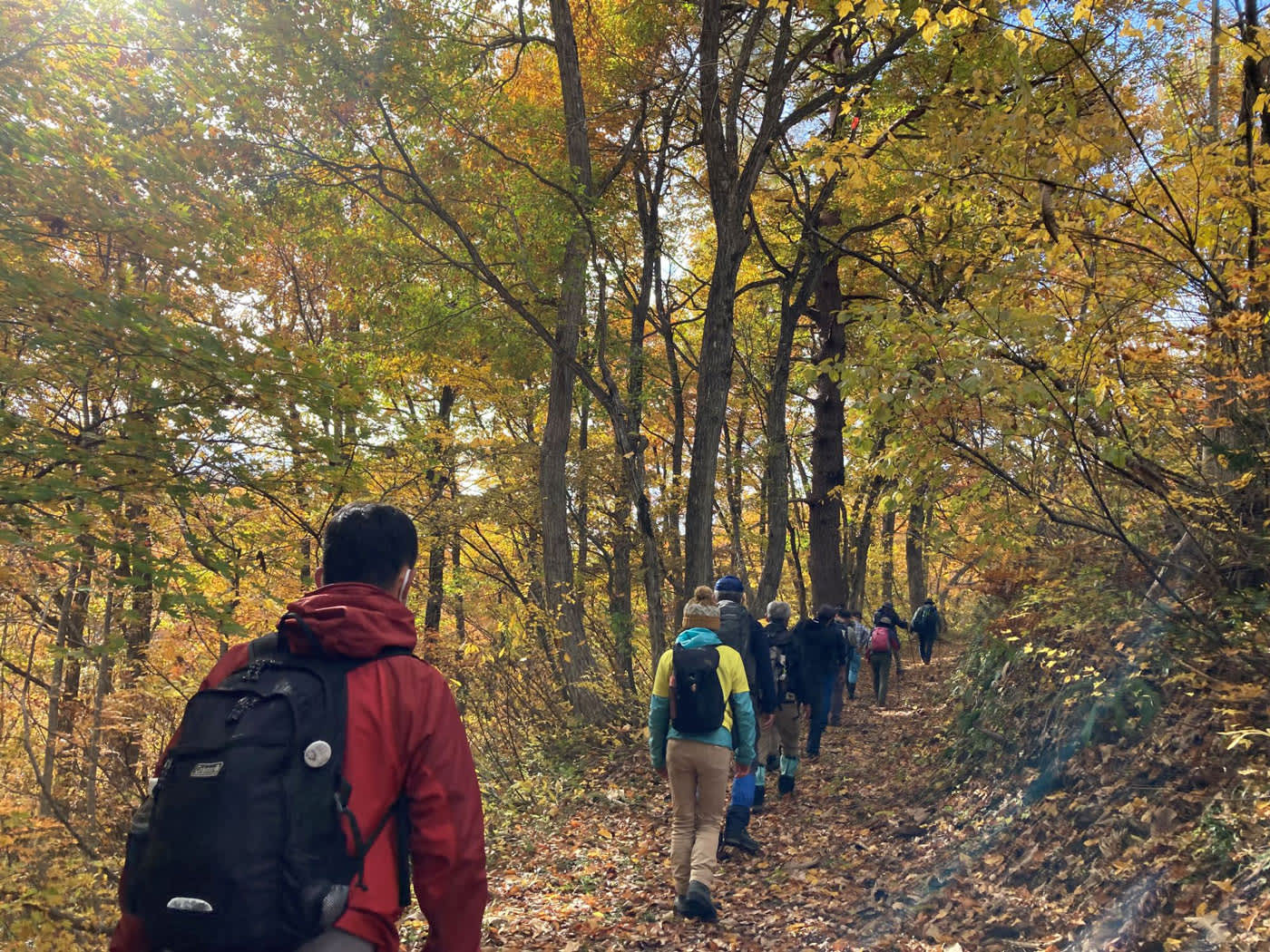
Immerse yourself in the tranquil forest surrounded by autumn foliage.
The Aizu Trail is split into different sections, and the Tadami Lake/Village Tour Couse is ideal for a day’s walk at just over 12 kilometers in distance. This scenic route takes in the dam, deep forests, mountains, and rural villages, taking around three and a half hours to complete.
The walk takes place deep in the Japanese countryside, a hidden gem, starting from JR Tadami Station. This station is reachable via an incredibly scenic three-hour train journey along the Tadami Line, beginning at Aizu-Wakamatsu Station. To get there from Tokyo in under three hours at the earliest, take the Tohoku Shinkansen bullet train to Koriyama Station and transfer to the JR Ban-etsu West Line to Aizu-Wakamatsu.
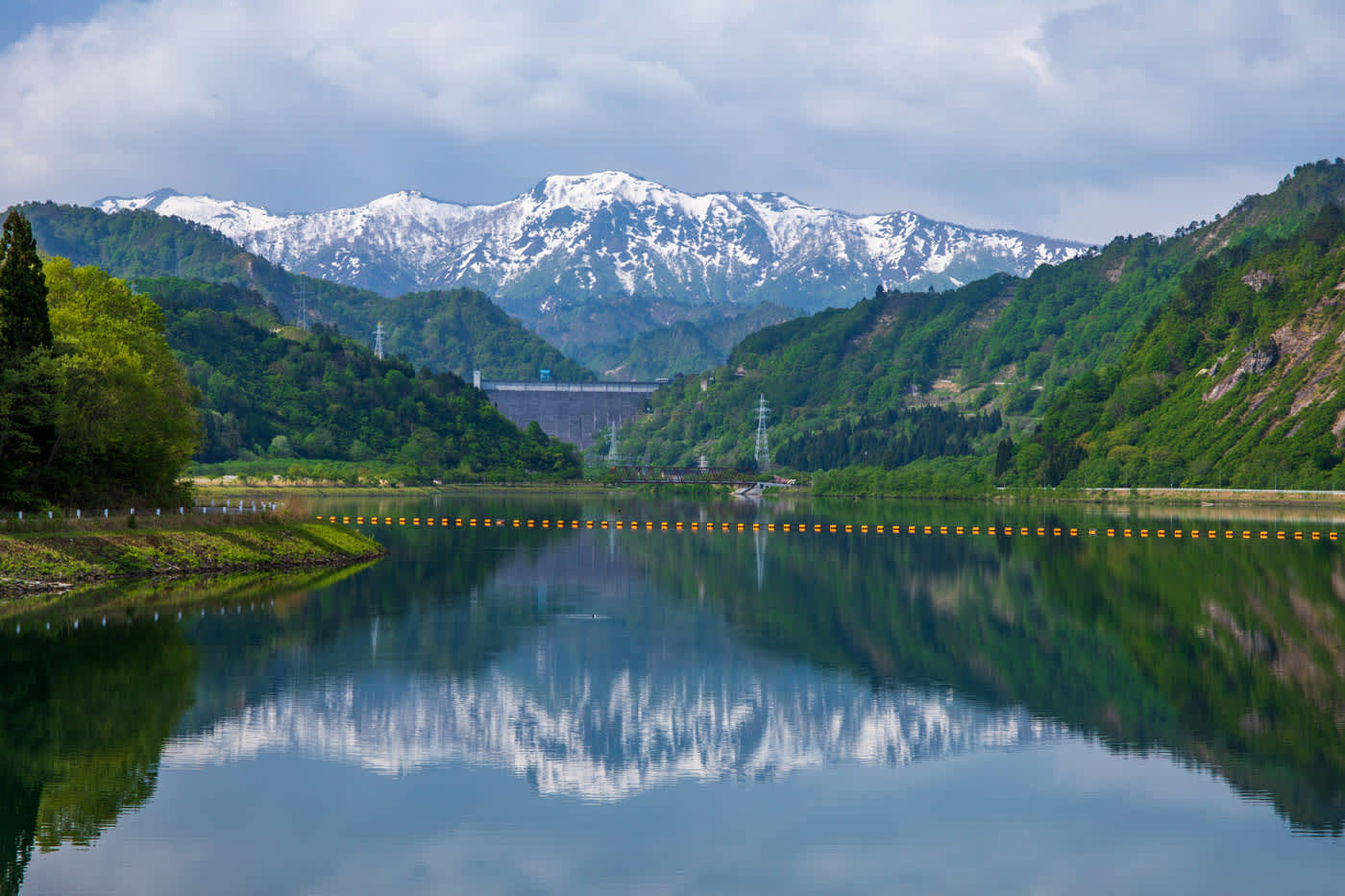
Tadami Lake reflecting snow-capped mountains in Fukushima Prefecture.
Tadami Town is surrounded by mountains rising over 1,000 meters at the western end of the Aizu region in Fukushima Prefecture, bordering Niigata Prefecture. The town's villages are clustered along the Tadami and Ina rivers.
Interesting stops along this section of the Aizu Trail include Taki Shrine, Tadami Dam, and Tadami Lake. This area is renowned for its picturesque landscapes that change with the seasons. The calm waters of the lake reflect the surrounding mountains and forests, creating a mirror-like effect perfect for taking photographs.
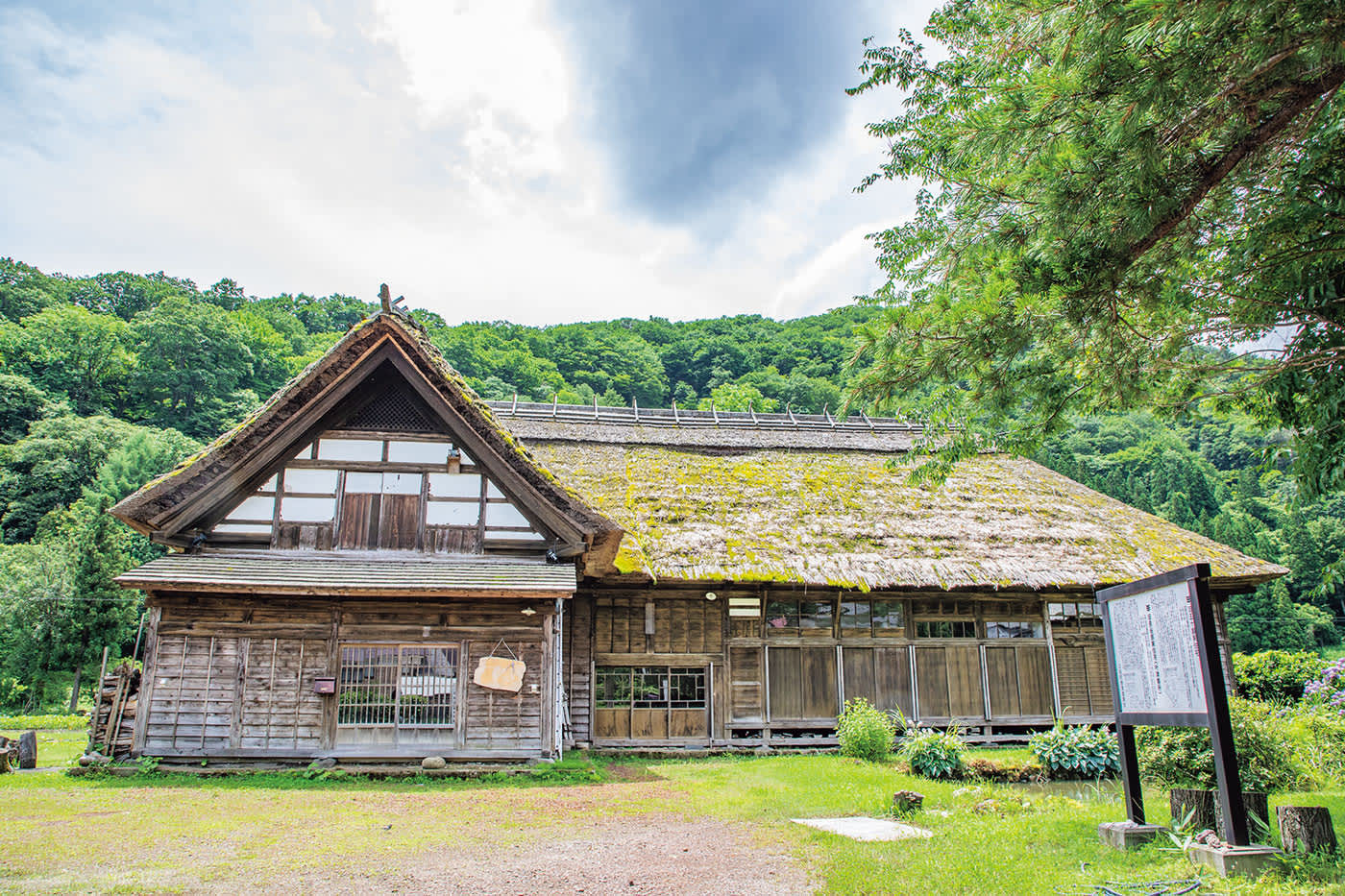
Prefectural important cultural property Kanozu Bansho (former Hasebe family residence).
The prefectural important cultural property Kanozu Bansho (former Hasebe family residence), was built during Japan’s Edo Period (1603-1867) and also makes for a fascinating cultural stop. Originally a guard station for the “Hachijuri Mountain Road” route connecting Aizu and Echigo, this building is recognized as an important cultural property, offering visitors insights into life during the Edo Era.
The forests and mountains of Tadami Town are also home to a wide population of plants, wildlife, and fungi, making it a frequent destination for research groups exploring this biodiverse environment.
Make Planning a Part of the Journey
Whether you prefer the stunning coastal scenery and charming islands of the Michinoku Trail or an adventure deep into Japan’s countryside on the Aizu Trail, the fun starts even before your arrival with the planning of the trip.
No matter if it’s a day-long hike or an overnight trip, spend some time researching how to make the best use of Japan’s excellent public transportation system. Local information centers are useful sources of up-to-date information and can also help to advise you on how to tailor your trip according to your physical abilities and the difficulty of the trail.
In addition to the places mentioned in this article, other standout sections of the Michinoku Trail include the hike from Taro to Jodogahama known for its beautiful forests and beaches, and Kinkasan Island, home to one of Tohoku’s sacred mountains and hundreds of free roaming deer.
From the singing sands of the Michinoku Trail to the ancient forests of the Aizu Trail, these walks provide an immersive experience into Japan’s natural and cultural landscapes, ensuring a memorable journey at every step.
Information
Michinoku Coastal Trail |
Michinoku Coastal Trail | Route Map (PDF) |
|
WEB:https://tohoku.env.go.jp/mct/english/top/pdf/01_hachinohe_title.pdf |
The Road to Recovery: Reconstruction Tourism in Tohoku |
|
WEB:https://www.japan.travel/en/japan-magazine/2202_road-recovery-reconstruction-tourism-tohoku/ |
Fukushima Green Reconstruction concept Aizu Trail |
























































